Larry Amponsah on his Art Journey,
Sharing People's Stories, Collages, Identity,
Decolonising art, Changing the Narrative and the Power of Art
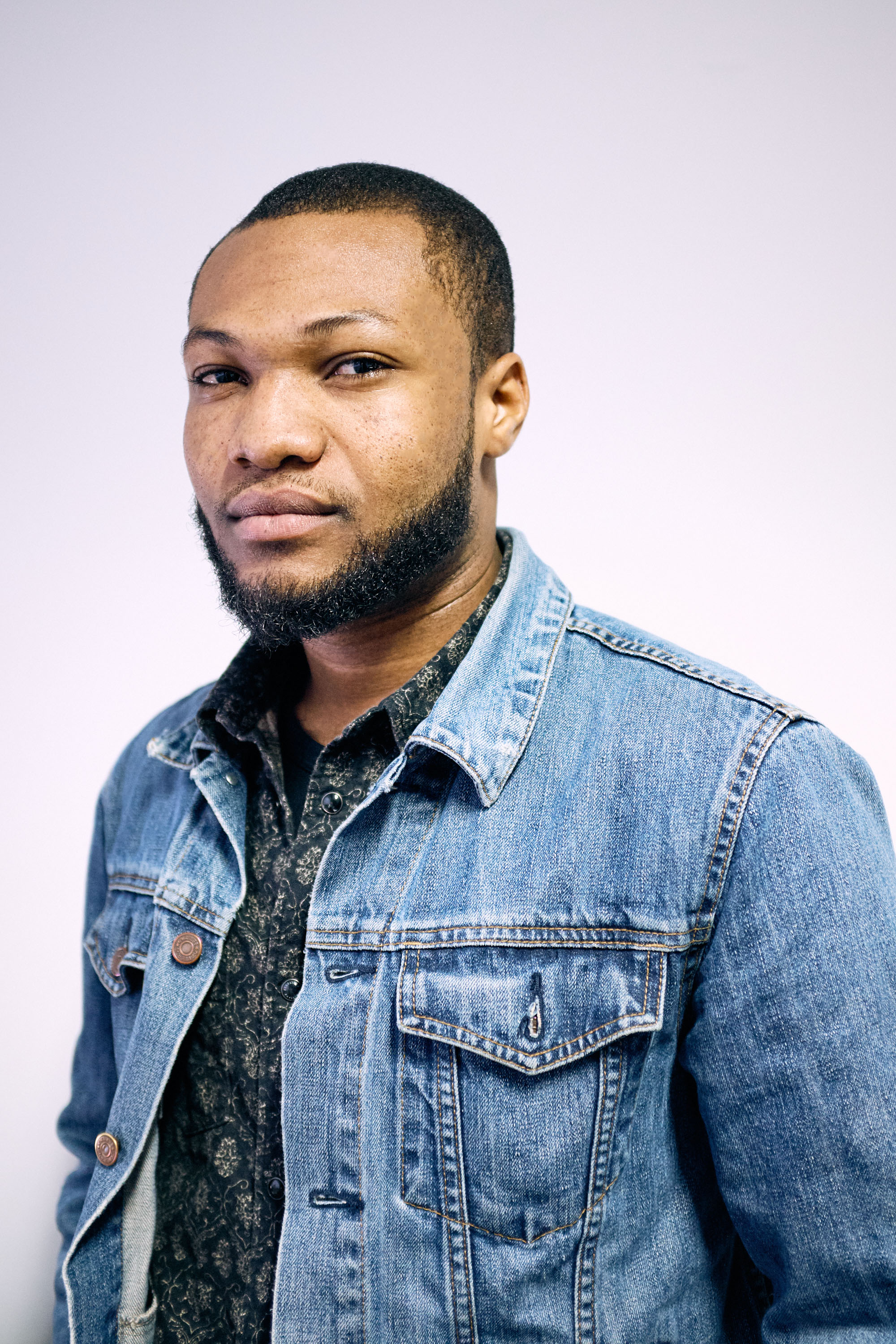
Larry Amponsah's artworks are striking and intricate. He is on a journey to share people's stories through his collages. Layers of depth are also visually alluring and enticing, thoughtfully crafted with meaningful moments and stories of those that the artist has met along his way.
The universal language of humanity is seeped into the photographs, into the paint, into the art and into the torn edges, fractures of lives and stories pieced together with narratives that need to be heard and seen, now put forth through the power of art.
Larry Amponsah goes beyond the surface with his art and his collages. The artworks are both aesthetically beautiful and drenched in notions of identity, politics and history. We asked Larry to tell us more about his practice and art journey...
When did you first get into art and what effect did art have on you?
As a kid I loved drawing! I don’t really know how that love for drawing and the skills came to be, it was something that just really resonated with me at that very early age and I never stopped. In class, I would always draw someone on my black slat using the limited white chalk that was freely given to each student for class work. But by the time each actual class began, my chalk was already finished and as you can imagine, I always got “disciplined” for that – this was before I was taught how to write, around 4 years old as far as I can remember.
By the time I was in class 1 in primary school, I had developed more popularity and confidence in drawing. This made me many friends (who admired my art) which was very important to me then, as it meant my actual learning process could begin. We mostly learn from our friends as kids. These kids had all the skills and talents you can think of. I can boldly say that I am who I am now, largely because of the many people I was fortunate as a child to be around.
You studied painting at Kwame Nkrumah University of Science and Technology in Kumasi Ghana and at the Royal College of Art (RCA hereafter) in London UK, and Chinese traditional painting and calligraphy at Jiangsu University China, can you share with us your reflections on your time spent at each of these institutions, how each art form as well as experience living and studying in different cities may have impacted your current work?
I have benefited so much from my travels. It’s always a learning process to set off from a familiar place to another (unknown) place. Of course, one tries to imagine what it might be like in a new destination, but from my experience, one’s imagination never comes close to the reality that awaits. Travelling has always been a way of setting up new challenges for myself and finding ways to overcome any obstacle that confronts me – an idea that forms the very foundation of my artistic practice.
Ghana is home, so there was not much to fear and it is from there (Ghana) I set out on my artistic journey. My ability to draw and paint at an early age gave me false assumption then, that I too was an artist. It took me a long time to figure out how wrong I was, as I later understood that possessing those skills of drawing and painting, had nothing to do with becoming a real artist, and that more had to be done intellectually, before one could claim that title of artist. Kwame Nkrumah University of Science and Technology (KNUST) made me an artist. I was taught to figure out ideas through various forms of experiments and to develop intellectual strength and confidence, which gave me the key to be able to join the global discourse of art. KNUST ushered me into my journey as a real artist.
China opened up a whole new world to me, a world of infinite possibilities, it made me aware that I was part of a grander global narrative and therefore that voice I had started developing in Ghana needed to be heard on many grounds no matter what. My time at Jiangsu University exposed me to a vast range of materials (both conventional and unconventional) to explore the unknown, thereby extending my practice into other economic, cultural, social and political avenues which solidified my sense of sensitivity.
My time in the UK highlighted the need for me to slowdown and pay attention to details. At the RCA, I was trained to understand my responsibilities as an artist and the kind of power that comes with that. For that reason, I had to develop my own language which could piece together the many ideas (vocabularies) I had been excavating over the years, in order to know how to express them with clarity. My boldness and maturity as an artist was well established during my time at the RCA. Complete practitioner’s independence is one of the very key qualities I gained there, which has hugely contributed to my success in living and working in London as an artist.
The countries and institutions i have studied and lived in, have collectively opened up my ideas in ways that were way beyond my imagination. My life and practice becomes a testimony of how significant it is to consider one’s identity as a formless fluid that is constantly shaped by the things we experience, the people we encounter, the journeys we embark on, the ideas we hold on to and the events we find ourselves in.
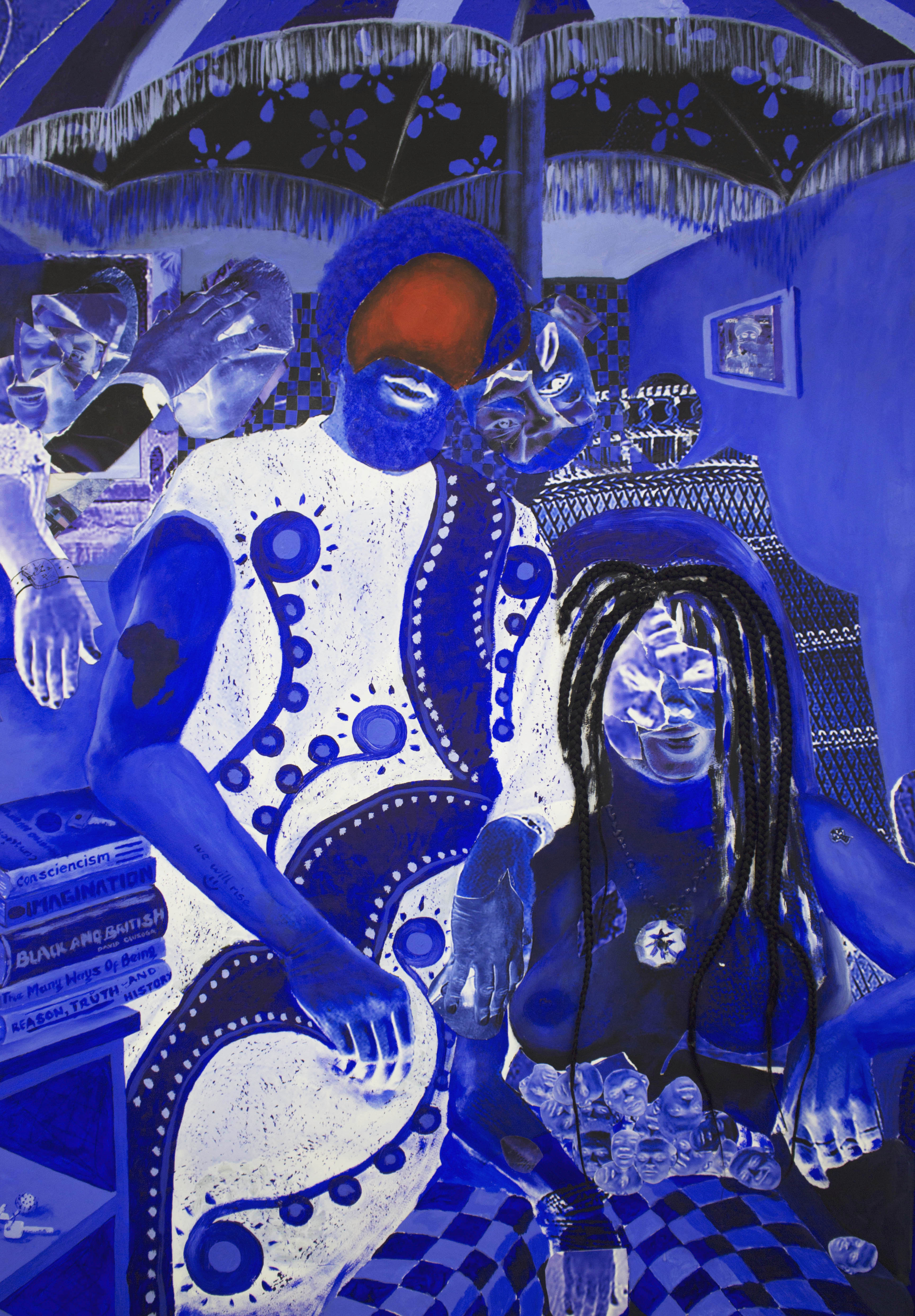
Led In Strange Ways, 2019. Inkjet Print, Fake Hair Extensions, Melted Glue-sticks & Acrylic on Somerset Velvet Paper. 120cm X 150cm
When did you start the technique of collage in your art and how did that come about?
It came about in 2013 whilst a student at Kwame Nkrumah University of Science And Technology, where my tutor Dr. kąrî’kạchä seid’ou told me to start spending more time at city centers (market places), engaging with objects and people with a sensitive, critical and intellectual eye, allowing those spaces and people to speak to me in ways I had never really experienced before, so that i could understand the nature of existing social structures, for interactions to aid me to break free from the conventional ideologies of art and in order to ask key questions that could trigger the exploration of other untapped avenues of what art could actually be or mean to me.
At the time, I didn’t really know what was going to emerge from that challenge, but I knew it was going to be a very difficult and interesting adventure. I invested in a less sophisticated camera (one of Sony’s tourist compact cameras) and started travelling the country and collecting images. I enjoyed meeting new people, having conversations (silly or serious – regardless) and sharing their stories on a daily basis. I realised the need to collage when I figured out how things truly work in the Ghanaian market squares (which is no different from other countries really – the concept of the market is one which is universal) in terms of how people bump into each other and share sweats, how humans and machines come together on roads, the colour clashes, how people device tactics to manoeuvre swiftly, how transactions are made with the approach of urgency and survival, how people respond to others based on moods, how the cunning prey on the vulnerable and also how neutral the space is in itself. So collage was the best technique to borrow in order to properly tell my story and the story of my people. For me, the act of collaging is a true representation of my identity – fluid, versatile, multi-faceted, questionable and ongoing.
How do you first approach the notion of identity within your art?
Openness has always been my first approach to identity. The notion of identity is like a double-edged sword, there’s a side where we see ourselves as we truly are and the other side where we are made to believe how others see us, is who we are. The danger is seeing one’s self in the light of others without having to verify for ourselves who they truly are. And it is even more scary in our times, seeing how technology is geared towards crafting people’s identity through search engines and adverts. The importance of paying attention to the things people hold dear and the need to examine those things are key to understanding the formation of people's identity that I encounter.
Determining one’s identity solely based on one’s looks is not enough. How a person looks is in fact far from who they are. It is one’s experiences, response, ideas, intentions and interests that formulate a person. Identity is questionable, so the relationships I create, the spaces I navigate, the cultures I learn from and the kind of people I collect materials from for my work, are all unique elements I examine in confronting the notion of identity with all honesty and authenticity.
Your impressive collages incorporate archival images, materials, stories and found objects, why is that important for you to use and what lies behind the visuals? What are the different layers you explore in your work?
In a world of proliferated images, collage becomes a channel that allows longer and deeper observation. It encourages me to always go beyond what is there through the constant process of experimenting, altering and reconfiguring. Everything is connected, and just realizing that, made me understand, that diligence on my culture would probably not fully be evident in my practice if I did anything else, hence my preference for collage.
“Always remember, every human being has something you don’t have so never stop learning, never stop asking, never stop giving and above all never stop connecting”, my grandmother would say to me. Gathering stories was engrained in my upbringing. I was taught to always welcome gifts, opinions and ideas because not only does this act increase one’s faith in humanity but it is also a way of obligating one (the recipient) to do better – hence the saying “to whom much is given, much is expected”. So gathering material and bringing together different stories, has been my way of learning, in that I too, can then teach with deeper understanding and accuracy.
I explore many layers in my work: beginning from the point when I embark on the journey of summoning (photographically) the images, stories and materials through negotiations and research; to the refining and digitally manipulating the images (changing colour, texture, scale, pixilation, etc.); to the tedious process of reprinting all the images; to the physical collage (tearing down, cutting out, building up, scrapping off and pasting on) to processing it with the actual language of painting; to painting the work itself or sometimes concealing the finished work with tapes or semi-transparent glue. Consequently, a lot goes on for my works to be produced. One of the aspects I enjoy the most in the process, are the parts of the images I choose to cover – that’s where some on my profound secrets rest and I’m surprised people don’t really ask me about that or even consider that aspect of collage, which is interesting.
So could you tell us a bit more about what the hidden parts of your collages are?
They are the unwanted gestures, emotions, flaws, basically everything that enforces stereotypes or trivialises cultures that are non-western. The idea of which, has continuously been replicated throughout the history of image making, and it’s a shame that even those who are suppressed sometimes come to terms with such ill ideas of representation.
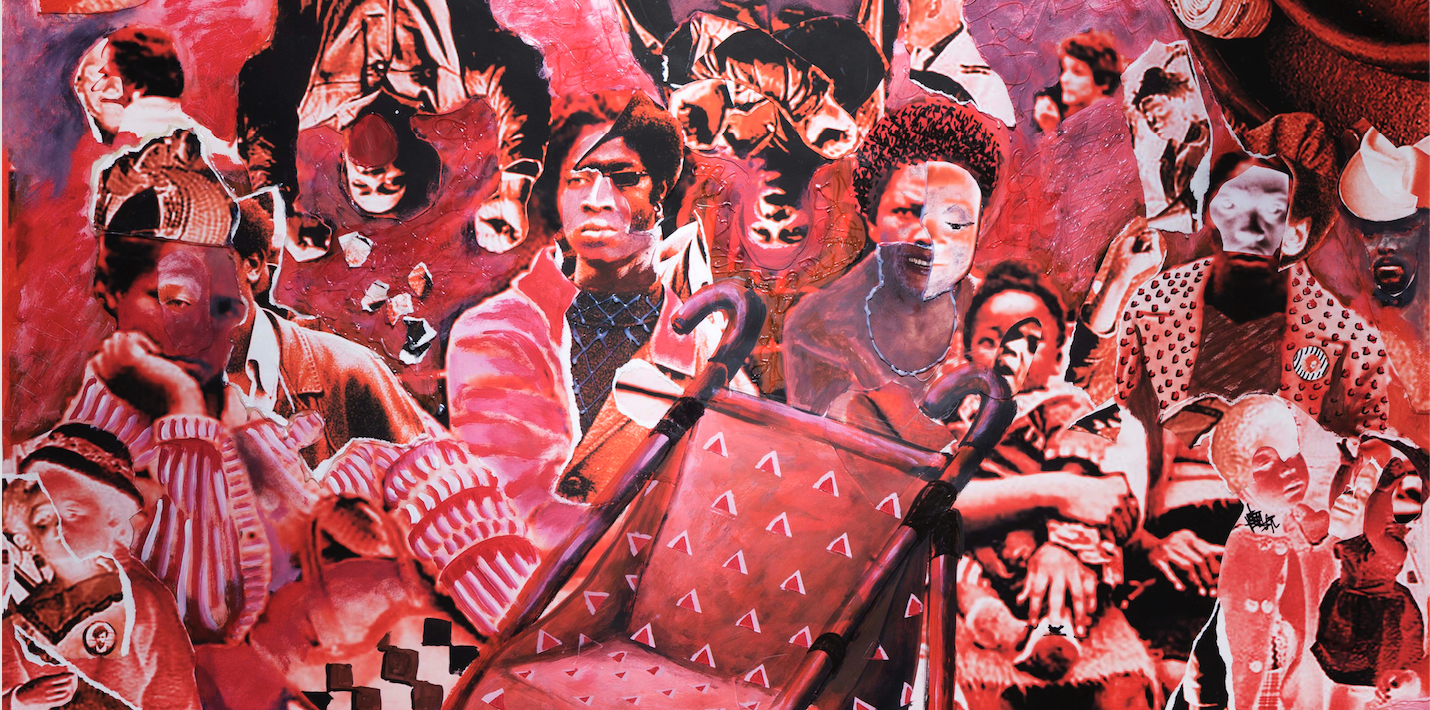
Gains And Loses, Inkjet Print, Resin & Acrylic On Somerset Velvet Paper. 108 x 155cm. 2019.
There are political and social issues in your work, politics can influence art, do you think art can have an influence on politics?
I believe everything is political, as we are constantly faced with making choices – a universal principle which applies to all people and everything (living and non-living). With this in mind, I am inclined to say that to deliberately reject choosing or taking a position on something, is in itself a choice, and one is then required to be honest with one self on that notion.
Choices are inevitable and so is politics, so yes, my work is very political considering the process, the level of thinking and hard work that goes into it, and the deliberate decisions that are constantly made within my work.
Art has always contributed to the fabrication and re-fabrication of our political structures and Politics in general. From the Prehistoric era when the idea of sympathetic magic (through cave paintings) was used as a way of empowering the cave dwellers in order to aid human survival, to our current world of numerous fights for justice and equally through protests and activism, Art has always been positively instrumental in helping us achieve our ambitions and has always encouraged humanity to do better. Art occupies a unique position to trigger change in all parts of our world today.
Art can also deliberately be devised to negatively create separation and to encourage the suppression of less dominant cultures. For instance, racial segregation and inequality as an idea started on the basis of looks and differences in human anatomical structures. And for these ideas to gain grounds, artists were employed to make images that could push that agenda. Art has also been weaponised in religion, politics and education as a device of oppression by those in authority. I am delighted that artists have now realised their power, position and responsibilities in society, currently using their work to fight against intolerable social and political ideas that have long been enshrined in our cultural institutions and are in many ways demanding change in order to decolonize many of these systems of oppression and injustices we still see today. I am optimistic that with a collective voice we can make our world a better and safer place to live. All the power we need to help our mental health, to fight against crime, injustices, climate change and so on, can be found in art, so the time to turn to art for answers is now, especially when we’ve tried everything else. Art is very powerful and therefore must continuously be made with meaningful intention.
Art is powerful and Art History is not complete and it is often relayed from one narrative or perspective, having multiple narratives and adding to the art history canon and to history is vital and important.
Art must be inclusive, accessible and fluid. Artists on the other hand must be aware of their power, take responsibility, have open approach to judgement and they must be willing to stand in solidarity with others when need be and above all, they must embrace collectiveness and collaborations.
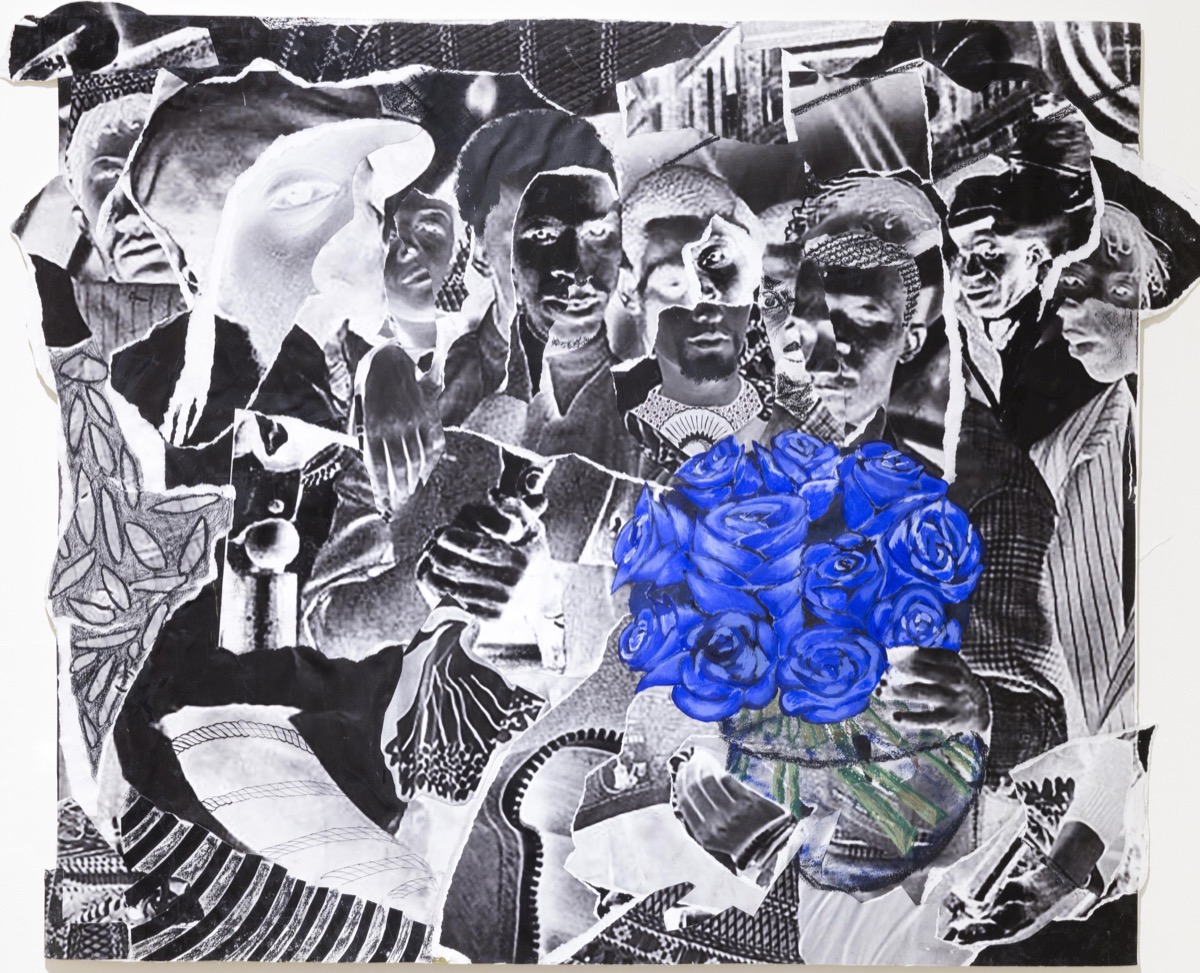
Unique Electricity Of The Peripheral..., Inkjet Print, Oil Pastel on Somerset Velvet Paper.2019
What are you working on next and what do you hope for the future?
I am currently working on various projects - all born out of the current global health crisis and the lockdown restrictions that were put in place to control the spread. The consequence of which was the lack of access to my studio, and i was kind of forced to rethink my usual work ethic, as I couldn’t afford to halt producing work. Art must live no matter what happens… in fact, art is always born out of need and crisis. Therefore, I devised a new way of working which has led me to new methods of making and producing effective configurations. Very little can be said about the future, but I know that the future is experimental and promising – there are no right or wrongs, so I am longing to consistently surprise not just my audience but also myself, as I am equally curious.
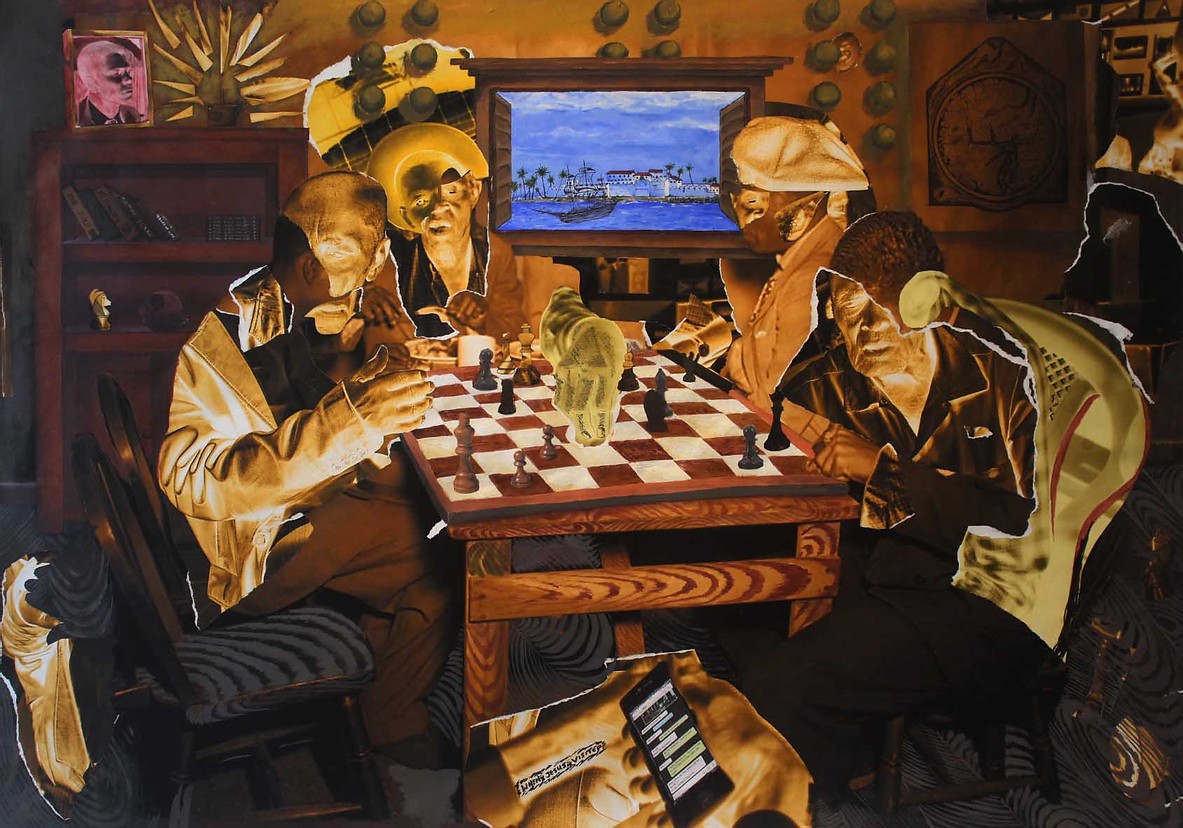
Distant Relative - A Land Far Away
Larry Amponsah (b. 1989, Accra-Ghana) is a multi-media artist whose practice investigates traditional modes of image-making whilst employing unconventional strategies of production to look at the contemporary politics of imagery. He received his MA in Painting from the Royal College of Art, London (2018) after studying for an MFA in Chinese Traditional Painting at Jiangsu University China (2016) and gaining his BFA in Painting at Kwame Nkrumah University of Science and Technology (KNUST), Kumasi, Ghana (2015). Larry is currently a Trustee of The Kuenyehia Art Trust in Ghana, was shortlisted for the 2019 Young Masters Art Prize and for the 2019 Dentons Art Prize. In 2019, he won the Be Smart About Art Award.
His work has been exhibited at 50 Golborne Gallery, London, UK; The Fine Art Gallery, Hoag Hall, CSU-Pueblo, USA; 1:54 Contemporary African Art Fair, London; Museum of Science and Technology, Accra and many other places.
Amponsah, traditionally trained as a painter, creates collages made of archival images, objects, and stories from various cultures in order to negotiate systems of power and create new ways of transcending boundaries. His interest in collage emerged from an early fascination with Ghanaian calendars, which are often stacked in many layers upon each other, year after year, in distinct contexts such as homes in less privileged communities and market stalls run by petty traders. Throughout his travels and upbringing across Ghana, Amponsah continued to perceive this need to collect, layer, and collage — a gesture of gathering not only images, but also historical documentation and socio-political reflection. Anything from political leaders and cultural festivals to popular advertisements and natural phenomena may grace the pages of these calendars, and thus their contents become at once accessible yet also reverential within the layers of their hybrid print hanging-cum-archive. Amponsah has since continued to embark on his own journey of collecting pictures and narratives, nurturing a creative practice where curiosity, chance, and conversation become modes not only to survive, but moreover, to thrive.
@larry.collections
www.50golborne-artdesign.com
